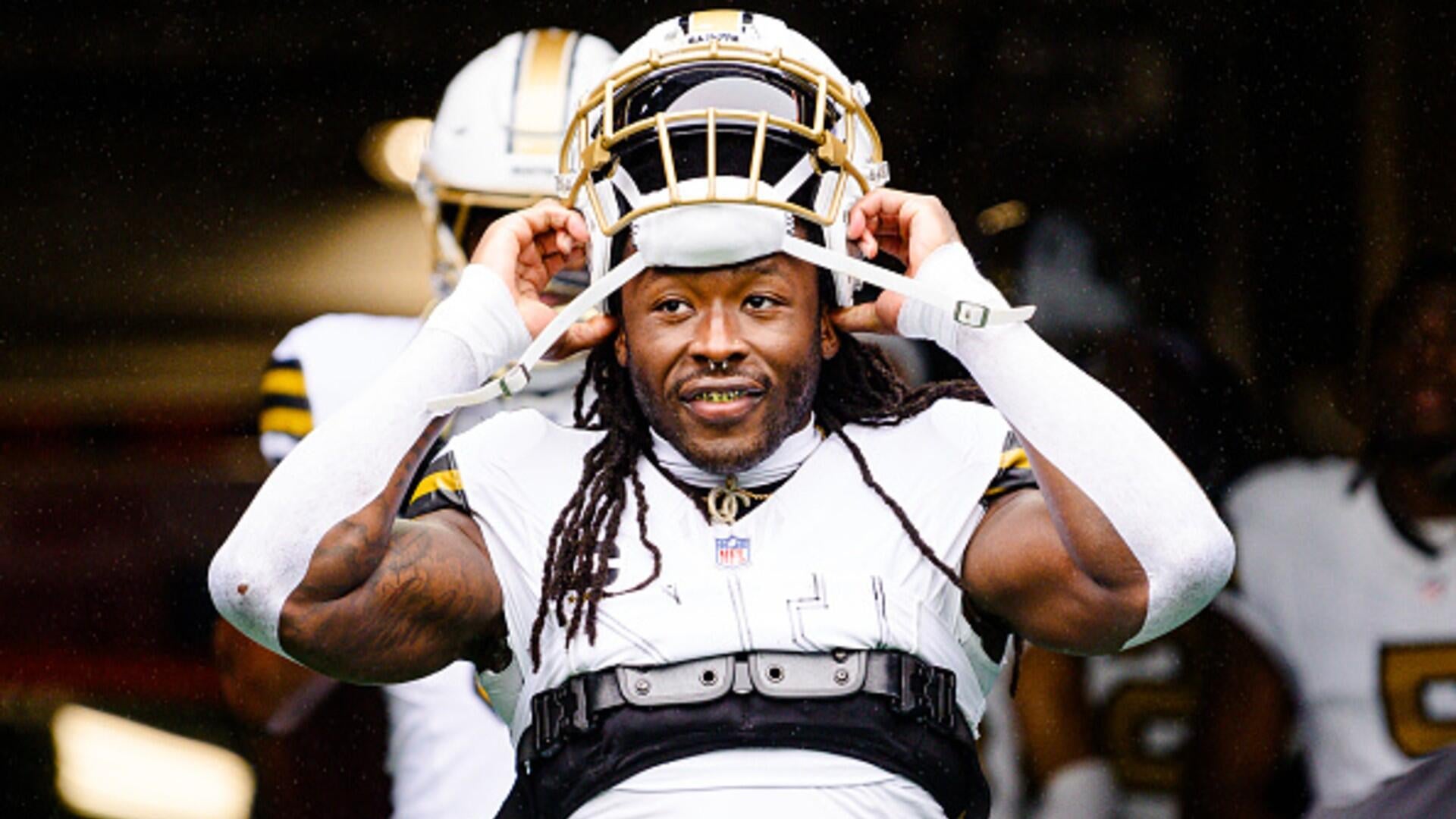BREAKING NEWS: The Buffalo Bills are reportedly eyeing a $19 million wide receiver as the top target on their trade list before the NFL deadline.
How Spencer Carbery approaches hockey statistics, the ‘eye test,’ and the Capitals’ analytics staff

Spencer Carbery is one of the brightest minds in hockey. The reigning NHL Coach of the Year is in his third season at the helm of the Washington Capitals, looking to improve on last spring’s second-round playoff exit.

To do so, Carbery seeks to identify any advantage he can to make the Capitals better, and part of that process involves stats. During a recent appearance on ESPN’s The Drop
“I’m going to say 75 percent eyeball, 25 percent numbers,” Carbery said. “I’ll say this. Usually, more times than not, it matches up. When it doesn’t, and they send you a number that you’re like, ‘Whoa. I did not think we were so bad in that underlying number or that measurement.’ And then you go back, start to watch it, and you go, ‘Oh, okay.’ Usually, the numbers are right. Shocker. They don’t lie to you.
“That’s really helpful because, as coaches, sometimes you can get tunnel vision and your staff gets tunnel vision. You think of a player or a certain thing that you do like, ‘Nope, it’s good. It’s good. This is how we’ve always done it.’ And then someone brings you an analytical number and you start to look at it and you go, ‘Oh, okay. I see what they’re talking about.’”
Carbery elaborated on his communication with the Capitals’ analytics staff, how he then approaches the stats they provide, and how he translates the math into, hopefully, more on-ice success for the team.
“Usually, our analytics team will tell us, ‘Hey, you’re doing this really well, or you’re doing this poorly.’ And you’ll look at it and you go, ‘Yep, that makes sense. I would agree with that,’” he said. “But there’ll be some that you go, ‘Geez, I thought we were really good at that.’ And we’re not. For instance, we give up the third most odd-man rushes in the NHL. Your eyeball should tell you that. In a game you’re watching, you’re like, ‘Geez, we’ve given up a lot of odd-man rushes.’
“But sometimes you’d be like, ‘I don’t feel that way. The third most odd-man rushes? What are we doing wrong?’ And then you start to dive into it and you go, ‘Geez, I see what they’re saying.’ And then it’s on us as coaches not to be stubborn. Not go, ‘Nope, I’m set in my ways. We do what we do. Leave us alone,’ because now you’re going to fall short if you’re trying to get better in a bunch of different areas.”
When speaking to reporters at training camp, Carbery cited the team’s power-play faceoffs as another example of how he utilizes the club’s analytics department.
“Now I will say this, which I was super bummed about. I got our analytics team to do a deep dive into the significance of a power-play faceoff. How many goals does it equate to a year? It was actually pretty minimal,” Carbery said then. “I was like, ‘Damn. Maybe that’s the thing that the numbers can’t measure.’
“As a player, you’re getting ready for a power play — a big moment in a game. It’s 1-1 in the third period, and you lose that draw. But what the numbers can’t measure is the mental part of that. I’m like, ‘Oh, man, now we’ve got to go break out.’ Maybe there’s more than the numbers tell you, but if you dive into it, it’s not as significant as you would think.”
The discussion about faceoffs arose after Carbery and the rest of the Capitals’ top brass brought in former NHL center Zenon Konopka as a skills coach during camp. Konopka, who played 346 career games with the Anaheim Mighty Ducks, Columbus Blue Jackets, Tampa Bay Lightning, New York Islanders, Ottawa Senators, Minnesota Wild, and Buffalo Sabres, was one of the best faceoff men in the history of the league.
While he was perhaps more known for dropping his gloves, the Ontario native’s career faceoff percentage of 59.33 percent ranks second in NHL history among players with 500 or more faceoffs, behind only Yanic Perreault. Konopka came to Capitals camp after the team finished the 2024-25 season with middling results in the dot, ranking 16th of the 32 teams in faceoff win percentage (50.2%).
Dylan Strome (53.7%) is the only returning regular center who finished with more than a 50 percent win rate last season, joining Nic Dowd (49.9%), Pierre-Luc Dubois (49.7%), and Hendrix Lapierre (39.6%) as the main men down the middle this season.
“We have veteran centermen for the most part, like Dylan Strome, Nic Dowd, and Dubie,” Carbery said. “Those three guys are extremely in tune with faceoffs and what goes into that, and the opposition and the cat and mouse. They’re students of the game, so they really, truly care about their faceoffs. It is a big part of all three of their games.
“So, this was a way for guys who are searching for better ways to do things, more information, different ideas, different tactics, for us to bring someone into the organization to maybe help show some of that. ‘Here’s some ways you can tactically combat if a player does this, you can do this. Have you ever thought about doing this?’ So, those guys are thirsty for that information and trying to get better in that area. All three of those guys are really good faceoff guys, but it’s just trying to stay ahead of the curve and get better in that area.”
On top of his world-class communication ability, Carbery’s use of creative solutions to improve his team and his active implementation of analytics in his coaching will likely make the Capitals a force in the league for the foreseeable future.
The Capitals made a 20-point improvement in the standings from Carbery’s first year at the helm of the club last year. They went from the last team to qualify for the NHL’s postseason during the 2023-24 campaign to the first team to do so during the 2024-25 season after claiming the top spot in the Eastern Conference with a 51-22-9 record.





